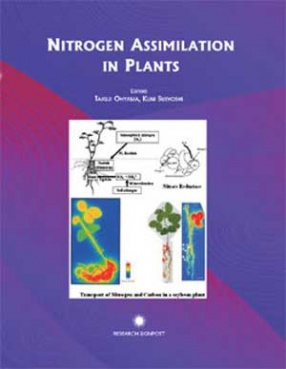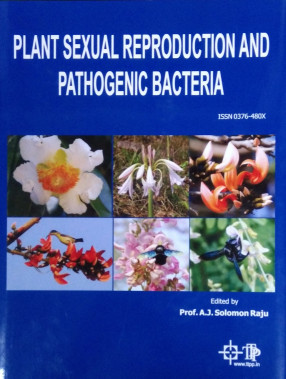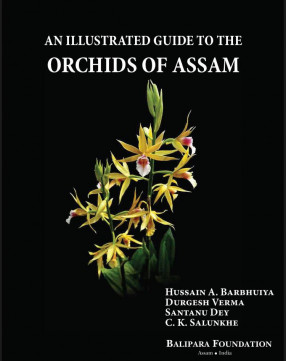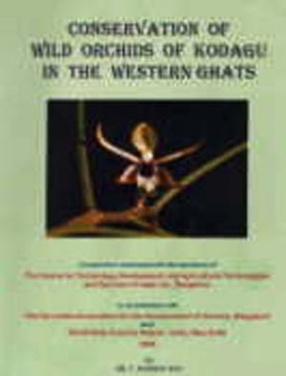Nitrogen Assimilation in Plants
Synopsis
The world population has increased four-fold during the 20th century from about 1.5 billion to 6.1 billion. Recently, the population in developed countries became constant, however, the population is consistently increasing in developing countries, and the world population in 2050 is estimated to be 9.0 billion. Therefore, sufficient supply of food to support an increasing population is essential at the global scale as well as for each country. During the 20th century and especially after the Second World War, crop production increased dramatically by about 2-4 times and supported food supply for people, although 800 million people still live under severe malnutrition. The increase in crop production has been due to development of agriculture, especially the use of chemical nitrogen fertilizers. However, the production of ammonia by industrial nitrogen fixation requires much energy, and is dependent on the consumption of fossil fuels. In addition to shortages of natural resources such as fossil fuels and rock phosphate, the excess or inappropriate use of chemical nitrogen fertilizer caused environmental problems such as nitrate accumulation in ground water, eutrophication of lakes, rivers and oceans, as well as emissions of global warming gases, and dinitrogen oxide (N2O). Nitrogen is a major essential element for all organisms, and a constituent of proteins, nucleic acids, and other indispensable organic compounds. Although nitrogen is highly abundant in the air (about 78% by volume), its concentrations in soil, crust rocks and sea water are relatively low, and the availability of N is often a limiting factor for plant growth in natural habitats as well as agricultural crop production. Major forms of inorganic N in soil are nitrate and ammonium, which plants absorb from roots. In addition, some plants such as leguminous plants can fix atmospheric N2 symbiotically in association with nitrogen-fixing soil bacteria, rhizobia. Ammonium is a key component in the assimilation of nitrogen into organic compounds, whether the N is derived from ammonium absorption, nitrate reduction, or nitrogen fixation. The ammonium is incorporated initially into the amide group of glutamine by glutamine synthetase, then into glutamate by glutamate synthase, after which the N is assimilated into various amino acids, proteins and nucleic acids.
There are five chapters in this book. Part I is entitled “Nitrogen Nutrition in Plants and its Availability from Soil”. In the first part, chemistry and biochemistry of nitrogen is introduced as a major essential element of plants. In addition, global nitrogen cycling and its availability from soil, and a case study of field estimation of nitrogen balance at a university farm are described. Part II is entitled “Nitrogen Absorption in Plants”. The absorption and assimilation of ammonia and nitrate in plants, rice, barley, and soybean is explained. Some traits of nitrogen nutrition in the root parasitic plants are also included. A new technology is introduced: the real-time visualization of transport of nitrogen in intact plants using the positron-emitting tracer imaging system. Part III is entitled “Nitrate Reduction”. Biochemistry of nitrate reductase, and the effect of light conditions on nitrate and nitrite reduction are reviewed in this chapter. Part IV is entitled “Nitrogen Fixation”. General aspects of biological nitrogen fixation, symbiotic nitrogen fixation and its assimilation in soybean, the regulation of root nodule formation in leguminous plants is reviewed. Furthermore, nitrogen fixation associated with endophytic bacteria, and nitrogen fixation and assimilation in green manure crops are discussed. Part V is entitled “Nitrogen Metabolism and Assimilation in Plants”. The growth and nitrogen utilization in rice plants is reviewed in the first part. Nitrogen metabolism in plant leaves and photosynthetic enzyme “Rubisco” turnover in the leaf are reviewed. Accumulation of soybean seed storage protein is discussed. Then nitrogen absorption and transport in vegetable crop cucumber and in flower bulbs are introduced. From a point of stock farming, lowering of nitrate-N concentration in forage crops is discussed. Topics concerning nitrification inhibition by plants and molecular mechanisms of molybdenum transport are also introduced.
This book has been planned to introduce studies on nitrogen absorption and metabolism of plants conducted mainly in Japan by researchers who are members of the Japanese Society of Soil Science and Plant Nutrition. Members of the society study plant nutrition, soil science and fertilizer from fundamental and practical points of view. Therefore, while researchers study genetic and molecular aspects of plant nutrition, we are based on agricultural production and environmental conservation.
Read more
There are five chapters in this book. Part I is entitled “Nitrogen Nutrition in Plants and its Availability from Soil”. In the first part, chemistry and biochemistry of nitrogen is introduced as a major essential element of plants. In addition, global nitrogen cycling and its availability from soil, and a case study of field estimation of nitrogen balance at a university farm are described. Part II is entitled “Nitrogen Absorption in Plants”. The absorption and assimilation of ammonia and nitrate in plants, rice, barley, and soybean is explained. Some traits of nitrogen nutrition in the root parasitic plants are also included. A new technology is introduced: the real-time visualization of transport of nitrogen in intact plants using the positron-emitting tracer imaging system. Part III is entitled “Nitrate Reduction”. Biochemistry of nitrate reductase, and the effect of light conditions on nitrate and nitrite reduction are reviewed in this chapter. Part IV is entitled “Nitrogen Fixation”. General aspects of biological nitrogen fixation, symbiotic nitrogen fixation and its assimilation in soybean, the regulation of root nodule formation in leguminous plants is reviewed. Furthermore, nitrogen fixation associated with endophytic bacteria, and nitrogen fixation and assimilation in green manure crops are discussed. Part V is entitled “Nitrogen Metabolism and Assimilation in Plants”. The growth and nitrogen utilization in rice plants is reviewed in the first part. Nitrogen metabolism in plant leaves and photosynthetic enzyme “Rubisco” turnover in the leaf are reviewed. Accumulation of soybean seed storage protein is discussed. Then nitrogen absorption and transport in vegetable crop cucumber and in flower bulbs are introduced. From a point of stock farming, lowering of nitrate-N concentration in forage crops is discussed. Topics concerning nitrification inhibition by plants and molecular mechanisms of molybdenum transport are also introduced.
This book has been planned to introduce studies on nitrogen absorption and metabolism of plants conducted mainly in Japan by researchers who are members of the Japanese Society of Soil Science and Plant Nutrition. Members of the society study plant nutrition, soil science and fertilizer from fundamental and practical points of view. Therefore, while researchers study genetic and molecular aspects of plant nutrition, we are based on agricultural production and environmental conservation.
270.00
243
$
300.00 $
Free delivery Wolrdwidе in 10-18 days
Ships in 5-7 days from New Delhi
Membership for 1 Year $35.00
Get it now and save 10%
Get it now and save 10%
BECOME A MEMBER







Bibliographic information
Kuni Sueyoshi